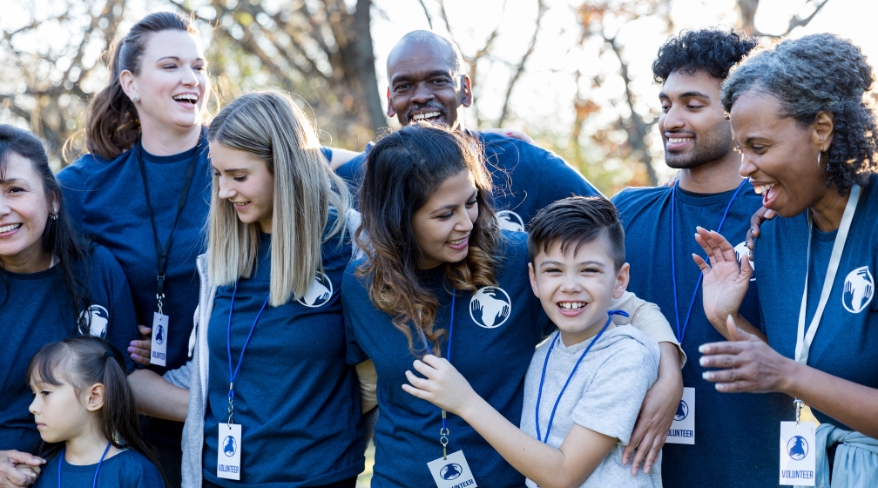Fundraising is a loaded term. The average person who is unfamiliar with the nonprofit sector probably imagines a bake sale or maybe even someone going door-to-door asking strangers for money. While those are true, they don’t fully demonstrate the complexity of the work involved in nonprofit fundraising strategies and the unique skill sets required to raise different types of philanthropic support.
You are probably reading this because your nonprofit has a heavy reliance on one or two fundraising tactics. Typically, many organizations start with either volunteers and individual contributions or large government grants. Both of those are effective fundraising strategies. However, there are many other ways to raise money and reduce reliance on just a limited stream of income.
Understanding Grant Budgets for Nonprofits
There are obvious benefits to making sure that you have a variety of income sources. It allows your nonprofit to be adaptable when there is potential risk or uncertainty in the economy. A diverse source of philanthropic funding allows a nonprofit to scale at a more confident level. And the most obvious reason to have a diverse set of revenue is it allows the nonprofit to access more money.
Grant Budget Breakdown: Key Insights
Assess Your Current Fundraising Efforts
The first thing you need to do is assess your fundraising strategies today. What are you doing to bring in philanthropic income and what has the best return on investment for your organization? Next, identify the most effective fundraising strategies to employ. It’s more important to focus on one or two concepts that you can incubate and scale to success as opposed to spreading yourself too thin.
Types of Grant Budgets Explained
Grant Writing
Many times, nonprofits who write grants will focus on private foundations or government funding. Typically, grant applications will have strict eligibility requirements. Writing grants takes time, and the first request is typically not always successful. However, grants typically result in large one-time or multi-year contributions that can provide nonprofits with flexibility or allow them to invest in unique programming at scale.
Individual Donations and Membership Programs
Many nonprofits begin because of volunteers coming together. Those founders and early nonprofit leaders will invest their time, talent, and treasure, more specifically donations, to ensure the viability of the nonprofit. Moving beyond the core stakeholders and identifying new individuals to donate is like a for-profit business funnel. You want to identify interested people, get them involved, ask them for money, and communicate the impact of those dollars. Personal relationships between the donor and the nonprofit are integral to the success of an individual giving campaign. Moreover, communicating with individuals requires a well-organized database and the investment in electronic or print communications to solicit new donors and keep current donors engaged.
Beyond individual donations, nonprofits could set up a membership program where there are direct benefits to the contributor. When considering a membership program, you must imagine the costs associated with providing the benefits to your members. Membership programs are a perfect entry point for new donors because they get a taste of what it means to be involved while receiving some benefit that excites and delights them as they continue with their engagement throughout the year.
Crafting Effective Budget Narratives
Special Events and Peer-to-Peer Fundraising
Another obvious fundraising tactic that nonprofits and board members identify to pursue is hosting a special event. One of the important things to consider with a special event is asking about the “ultimate goal.” In the first place, it is important to raise money, but many times nonprofits will host events to thank their donors or to simply engage a new audience. One of the most valuable reasons to host a fundraising event is to encourage your current stakeholders to invite new people into the fold who can contribute. The challenge is moving those first-time and event-only donors into your annual fund appeal and building a stronger connection with them after the event. Fundraising events cost a lot of upfront money to produce and have the lowest return on investment in the short term. Done well, they are great opportunities to showcase the organization and build an acquisition pipeline for future donors.
One way to make your special event broad-based, engaging, and more effective is to use a peer-to-peer model. Fundraising events, like walks or runs, will be organized by teams, and the individuals who are on those teams may reach out to their connections and ask them for support if they are successful in completing the walk or run. However, your nonprofit will need to invest in some sort of digital platform to make it easy for those donors to engage their networks.
Major Gifts
This term is well known in the nonprofit sector but what is even more valuable is understanding how to define “major gift” for your organization. Before you pursue this as a fundraising tactic, you should have several donors to target in conversations about significant philanthropic investments. We recently posted about the path to finding major gifts within your database. That’s not to say that a small nonprofit that has a couple hundred annual donors cannot pursue this, just consider your short-term needs when pursuing this tactic.
Planned Gifts
This fundraising tactic is usually employed by large organizations that have long-term donor bases. More specifically, planned gifts are contributions committed today where the money will be realized later through a bequest when someone passes. These gifts are significant and can impact the bottom line of any nonprofit. The most important thing to consider when pursuing a planned giving program is that the nonprofit will most likely not see the revenue for many years, so it’s important to manage expectations when it comes to investing in a planned giving program. Seeing the results just takes time.
Crowdfunding and Social Media Engagement
Over the past several years, crowdfunding has generated a lot of revenue for nonprofits that have excelled in promoting their brand across social media. Events like Giving Tuesday, statewide “give days” and other giving days provide a platform for nonprofits to focus their fundraising efforts in a dedicated 24-hour period. There is a lot of time and effort before the event to promote it and the resulting dollars may not always reach the nonprofit quickly after the event ends. The visibility of the “giving days” is great, but depending on the amount of time it takes away from other efforts, the benefits may not pay off. In addition, we are seeing a trend moving away from coordinated community-wide efforts to nonprofits hosting their own give days, which limits some of the greater visibility that exists with larger efforts.
Corporate Giving and Sponsorships
A lot of nonprofit leaders imagine that the corporate sector has lots of money to throw around. That is true. However, only 5% of total philanthropic dollars come from corporate giving. Most businesses will use marketing dollars to get their brand in front of patrons and nonprofit stakeholders to build goodwill in their community. Beyond corporate brand visibility, there are opportunities to build partnerships with businesses to invest in the work that you’re doing. It’s important that when considering a corporate giving program, you have reasonably strong ties to the business community, an understanding of their intentions in giving, and the timeline by which those businesses make decisions for contributions.
Optimizing Grant Budgets for Success
Implementing New Fundraising Tactics
Once you have determined what you want to pursue, create a plan of action. Give yourself some time to see the results of those efforts and evaluate the success or the challenges that have come along the way since you’ve implemented the new fundraising tactics.
One of the most important considerations in thinking about diversifying revenue is making sure that the staff or volunteers who will execute these strategies feel prepared and confident to be successful. One of the biggest challenges in the sector is imagining that money exists and blindly going after it. Instead of doing the strategic work of understanding your nonprofit and economic market, some nonprofits jump right in and flounder. Be strategic about what will bring your nonprofit the most success for the best return on investment.
There are a variety of different ways to diversify your philanthropic revenue. The benefits are obvious: greater opportunity for revenue growth, the ability to withstand shocks to revenue sources that may be in danger, and a stronger network of supporters to propel your mission forward. You must consider the investment of time and effort on behalf of your team to pursue these additional revenue streams. If you are strategic and thoughtful in the new tactics to pursue, you will be able to grow your fundraising base and support those who need your mission the most.






